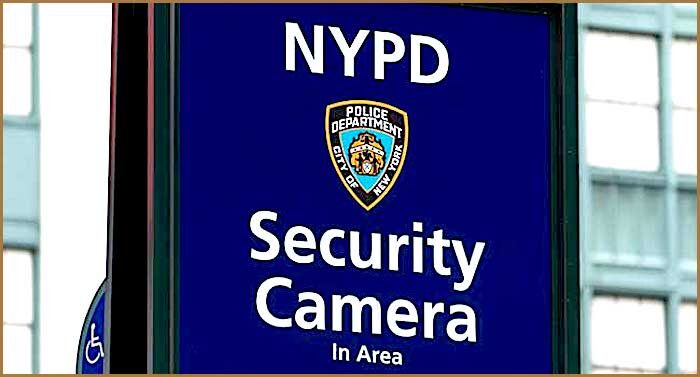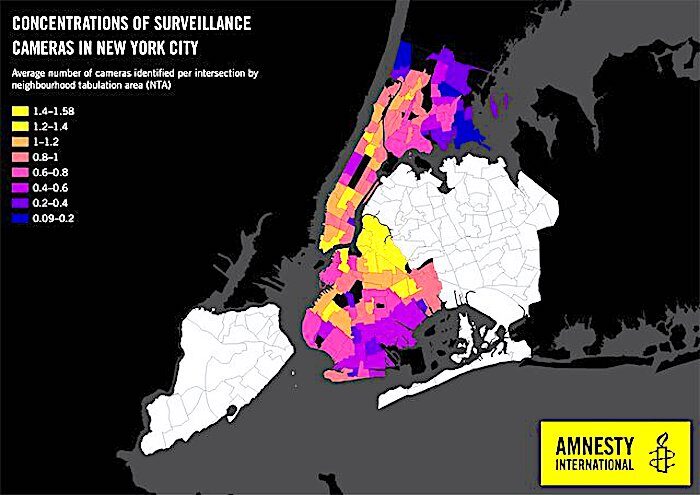The NGO said the scale and power of the police department's systems give it an "Orwellian" ability to track people across the city - with particularly severe implications for those already targeted by discriminatory policing practices.
At the start of May, Amnesty recruited thousands of volunteers to tag surveillance cameras at intersections across Manhattan, Brooklyn and the Bronx using images from Google Street View. They have so far identified 15,280 cameras across the three boroughs, with certain neighbourhoods particularly heavily surveilled.
According to the project's lead researchers, poorer neighbourhoods of colour are host to some of the most heavily surveilled street intersections. East New York in Brooklyn, which the last census recorded as 54.4 per cent Black, 30 per cent Hispanic and 8.4 per cent white, was top of Amnesty's ranking of most heavily watched neighbourhoods, with 577 cameras found at street intersections across a relatively small area.
The findings come after a year that has seen the NYPD under increasing pressure over its policing practices, in particular its failure to tackle institutional racism. The disproportionate arrests and violence it metes out to communities of colour helped fuel the protests that filled streets across the city in the summer of 2020.
The police response to those protests was often criticised as disproportionately harsh when it came to dealing with demonstrators themselves, with the force's Strategic Response Group beating peaceful protesters with batons and arresting them for kneeling in the street.
Amnesty points out that aside from violent encounters on the streets, the force also used facial recognition technology to track Black Lives Matter protesters. One activist, Derrick Ingraham, found 50 police officers gathered outside his apartment and a police helicopter overhead after the force apparently used a picture from his Instagram page to find him. He was pursued for shouting in an officer's ear with a bullhorn.
Matt Mahmoudi, artificial intelligence & human rights researcher at Amnesty, warned that information about the workings and uses of the NYPD's surveillance structure is still hard to come by. The department dismissed freedom of information requests from the NGO and its partners in the "Ban the Scan" campaign.
"People across the world are deeply concerned about the risk that facial recognition poses to our societies. That is why Amnesty International, and coalition members from over a dozen NYC-based organisations, are calling on authorities to outlaw the use of facial recognition technology by all government agencies in New York City. State Senators, City Councillors and prospective mayoral candidates have one choice - ban the scan, or risk turning New York into a surveillance city right out of the authoritarian playbook."





Really? I dare Amnesty International reps to go to East New York neighborhood at night and come out alive. If they do, they can talk about human rights violations and other crap.